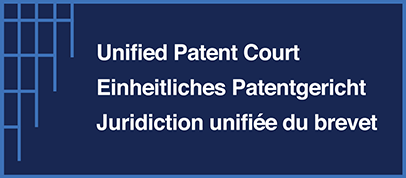These modules outline the workflows, actors, and relevant Rules of Procedure in the UPC CMS. They emphasise external users’ actions, but also refer to actions by UPC clerks and judges.
Modules generally focus on details of the Written procedure, which is the phase in the proceeding in which external users will be more involved and will lodge pleadings, and conclude with overviews of the Interim and Oral procedures. They also include an introduction to the CMS, its principles and how to use it, including common patterns and general advice.
Infringement proceedings
Infringement proceedings in the UPC begin with an Infringement action as the main proceeding, which may be followed by a Counterclaim for revocation and an Application to amend the patent as related proceedings. This page sets out the overall processes and timeline.
An infringement action in the UPC is a legal proceeding to enforce a Unitary Patent or a European Patent, that has not been opted out of the UPC, against an alleged infringer. An infringement action can be brought against a single defendant or multiple defendants, and it can be used to seek a variety of remedies, such as injunctions or damages.
Within three months of service of the Statement of claim for an Infringement action, the Defendant must lodge a Statement of defence. The Statement of defence may include a Counterclaim for revocation against the other party, which is described by Rule 25 as an “assertion that the patent alleged to be infringed is invalid”.
Revocation proceedings
Revocation proceedings in the UPC begin with a Revocation action/Declaration of invalidity as the main proceeding, which may be followed by a Counterclaim for infringement and an Application to amend the patent as related proceedings. This page sets out the overall processes and timelines.
A Revocation action or Declaration of invalidity in the UPC is a legal proceeding to challenge the validity of a European patent or supplementary protection certificate (SPC). The action can be brought by any person who has a legitimate interest in doing so, such as a competitor of the patent holder or a company that is accused of infringing the patent.
In response to a Revocation Action being filed, the Defendant has two months from the service of the Statement for revocation to lodge a Defence to revocation, which may include a Counterclaim for Infringement and/or an Application to amend the patent. The counterclaim shall contain details pursuant to RoP50.3. The counterclaim must be lodged on the same day that the Defence to revocation is lodged.
It’s important to remember that it is not possible for the defendant in the main proceeding to commence this related proceeding without confirming the party's details in the main proceeding.
Note that on the CMS the Counterclaim for infringement is a separate case from the Revocation Action, with a separate workflow and proceeding number. Therefore the defendant in the Revocation now takes the role of claimant, and the claimant becomes the defendant in this procedure.
Roles of the parties indicated in the following paragraphs refer to the Counterclaim for infringement parties on the CMS, e.g. “ACTOR Claimant” in the Counterclaim CMS case shall be read as “Defendant” according to the Rules of Procedure
The Claimant starts a Counterclaim for infringement:
Focus
Infringement proceedings in the UPC begin with an Infringement action as the main proceeding, which may be followed by a Counterclaim for revocation and an Application to amend the patent as related proceedings. This page sets out the overall processes and timeline.
Revocation proceedings in the UPC begin with a Revocation action/Declaration of invalidity as the main proceeding, which may be followed by a Counterclaim for infringement and an Application to amend the patent as related proceedings. This page sets out the overall processes and timelines.
A legal team is a group of CMS users who are allowed to work on a case under the responsibility of the authorised representative of a party – for example, other representatives, paralegals, and specialists from other firms. All team members can view documents and perform tasks for stand-alone, main, and related proceedings.
Each case* will have a team, even if it consists of only one person. When a case is started, the CMS will automatically generate a team which can be modified as necessary. Defendants and respondents will create and manage their own teams.
Other
The Statement of Appeal must be lodged within the two months of service of either a final decision of the Court of First Instance or any decisions terminating one party’s proceedings (RoP220 (a) or (b)) pursuant to RoP 224(a).
The judge may invite the party to comment with a decision being issued within 3 weeks of receipt of the Statement of Appeal by the Registry and appeals against separate decisions relating to infringement and validity may be heard at the same time.
Note that this appeal scenario is based on the language of proceedings at the Court of First Instance being selected and preliminary examination resulting in the Statement of grounds of appeal complying with RoP226.
The Case Management System is the core collaboration platform for performing the judicial tasks of the UPC. It is the official channel to access the Court and to perform activities with legal validity, and it provides the technical environment for interactions of the UPC staff as well as between the UPC internal and external users.

